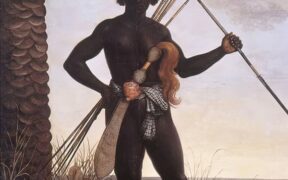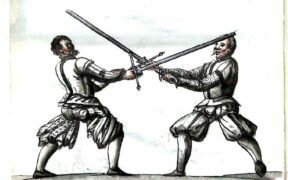Most Popular Asian Sword Types
NO AI USED This Article has been written and edited by our team with no help of the AI
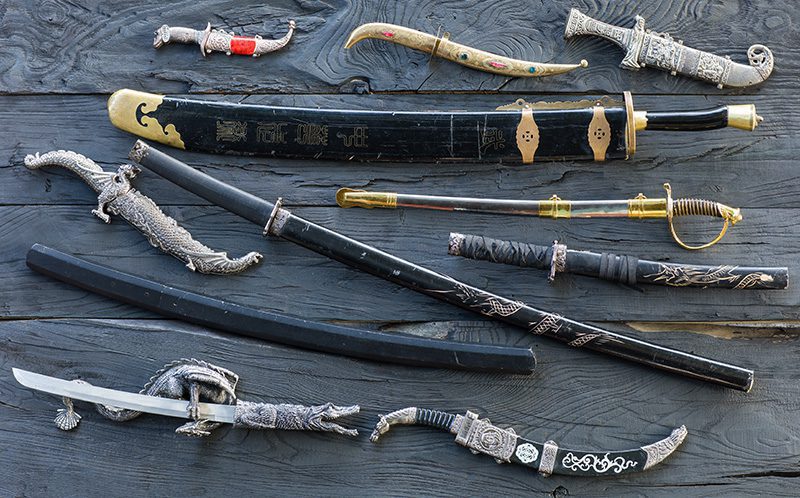
Asia boasts a rich cultural heritage and martial traditions, with its swords playing a vital role throughout its history. Recognized for their exceptional craftsmanship and intricate designs, these weapons have been important not only in warfare but also in ceremonial practices and martial arts, reflecting the values and traditions of their respective cultures.
Let’s explore the most popular Asian sword types, their distinct characteristics, and their historical significance.
East Asia
East Asia has a rich swordmaking tradition, featuring renowned swords which were made not only for victory in battle but also as status symbols.
Japan
1. Katana
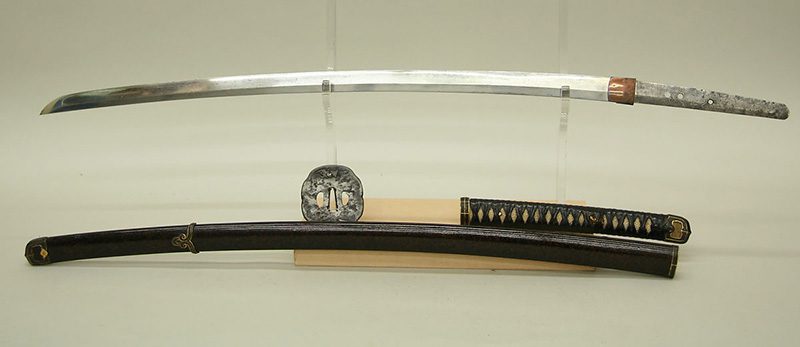
The katana, the long sword of the Japanese samurai, was typically worn edge-up, tucked into the warrior’s belt. It became popular as it allowed for quick combat response with the katana swiftly drawn and used in either offense or defense in a single move.
The katana was eventually worn exclusively by the samurai. Its elaborate mounting reflected one’s wealth, with wealthier samurai possessing multiple mountings for a single blade for various occasions.
- Design: Curved, single-edged blade
- Purpose: Combat, symbol of status/rank, ceremonial, diplomatic gift
2. Wakizashi
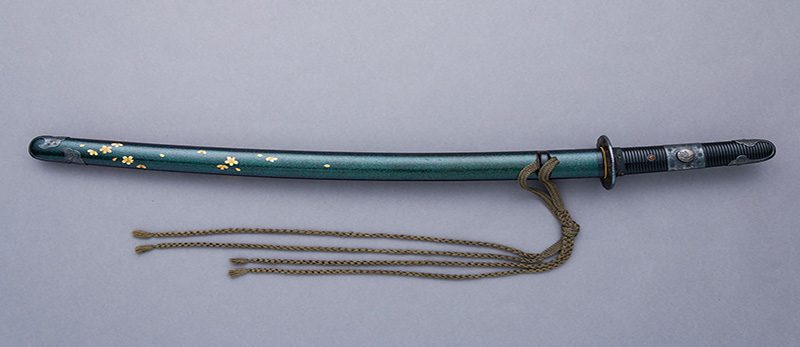
Similar to the katana, the wakizashi is a short sword worn in the same manner as the katana, often with the same level of craftsmanship and artistry.
It was often worn by samurai with their katana as part of the daisho, a paired set of swords. It also served as a secondary weapon when the katana was forbidden indoors or as a tool for seppuku—the samurai’s ritual suicide to preserve their honor.
Unlike the katana, non-samurai were permitted to carry the wakizashi, provided it had a blade length of less than 26 inches.
- Design: Curved, single-edged blade
- Purpose: Combat, symbol of status/rank, seppuku ritual
3. Tachi
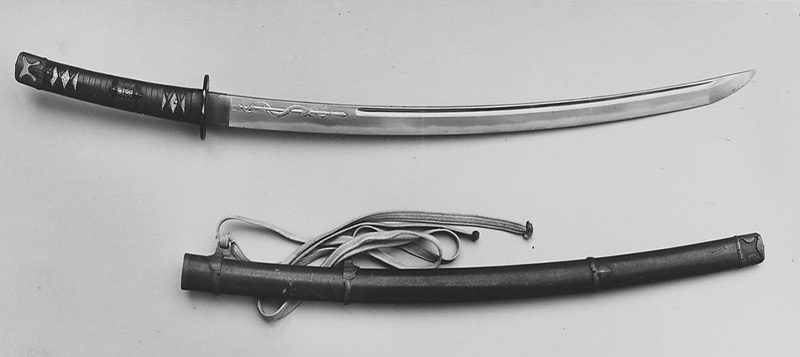
Predating the katana, the tachi is the first Japanese sword with a curved blade designed primarily for mounted combat, making it particularly effective as a slashing weapon.
Tachi was typically slung from the belts of Heian warriors or early samurai, with the cutting edge facing downward. For much of Japanese history, the tachi was considered the proper sword to wear with armor.
- Design: Curved, single-edged blade
- Purpose: Combat, symbol of status/rank, ceremonial
China
1. Jian
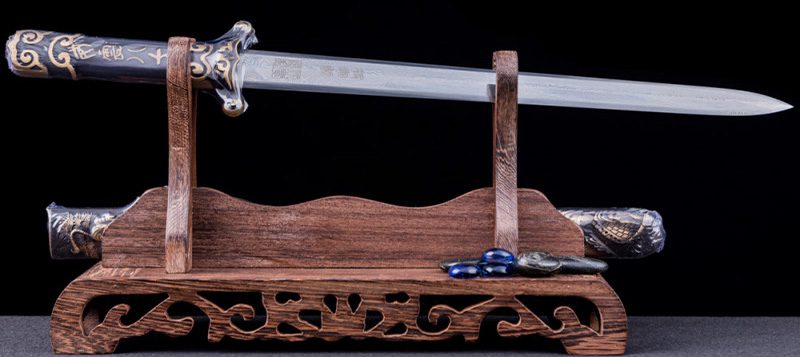
The Chinese jian comes in various forms, from large two-handed versions to standard-sized swords, as well as shorter swords and daggers. As a sidearm for the Chinese literati, its specific type indicated the rank of government officials.
Additionally, the sword was viewed as a protective talisman to ward off evil spirits and was favored in Taoist and Buddhist mythology. Some were crafted specifically for presentation to Tibetan monasteries.
- Design: Straight, double-edged blade
- Purpose: Sidearm, symbol of rank, ceremonial, performance
2. Dao
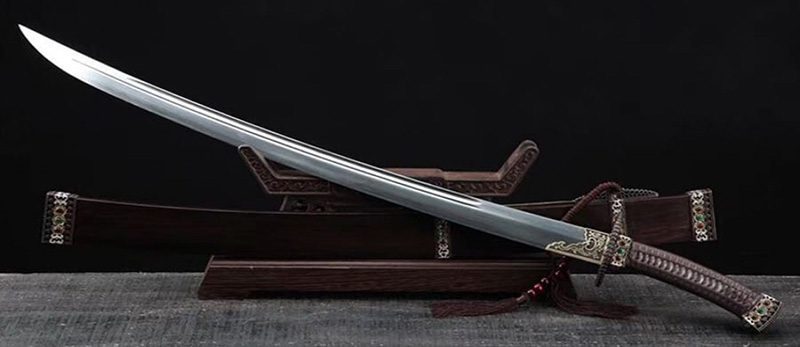
Although dao typically refers to the Chinese saber among martial artists and collectors, it describes a range of Chinese weapons, including knives, sabers, backswords, falchions, and polearms. Instead, terms such as peidao (waist-worn saber) and niuweidao (oxtail saber) are more accurate.
Peidao refers to a Chinese saber worn suspended from the hip. During the Qing dynasty, emperors, princes, and imperial guardsmen typically adorned their sabers with precious stones in the mountings while soldiers usually had plain brass mountings.
- Design: Broad, single-edged blade
- Purpose: Combat, military attire, symbol of status/rank
Korea: Hwando
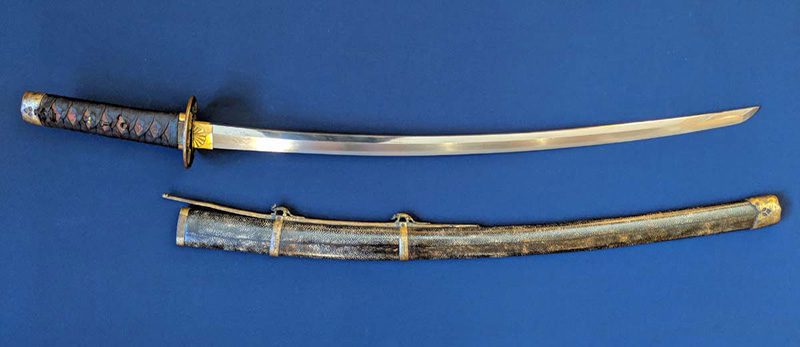
The hwando was the traditional sword of the Joseon dynasty in Korea, named for the rings, or hwan, on its scabbard. Being lightweight, soldiers could carry additional weapons, such as bows, arrows, and shields.
The saber used by high-ranking military officers of the dynasty is known as the byeolun-geom.
- Design: Straight or slightly curved single-edged blade
- Purpose: Combat, symbol of status/rank, ceremonial, daily tool
Southeast Asia
Southeast Asia features a fascinating variety of sword types. Each of these weapons reflects the region’s rich history, cultural influences, and martial traditions.
Indonesia: Keris / Kris
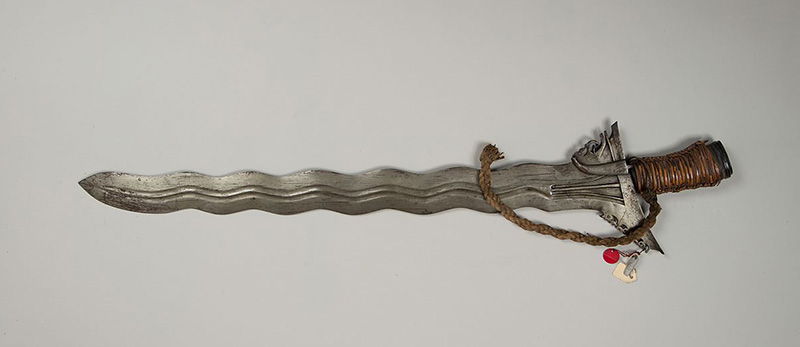
The keris is a thrusting weapon with its length ranging from a dagger to a short sword. Although it originated in Java, Indonesia, it shares a cultural heritage with neighboring countries such as Malaysia, Brunei, Thailand, and the Philippines.
Arms collector George Cameron Stone notes that the Javans attribute the invention of the keris to Inakto Pali, the 14th-century King of Janggolo.
Longer keris were traditionally worn by high-status individuals. It is believed to possess spiritual power, with certain pamor blade patterns considered to be more powerful.
- Design: straight or wavy double-edged blade
- Purpose: Combat, symbol of status/rank, criminal execution
Myanmar (Burma): Dha / Da / Dah

Recognized as the national sword of Myanmar (Burma), the dha is also utilized by various ethnic groups in Thailand, Laos, and Cambodia. Although most are slightly curved, the Kachin dha is notable for its straight blades, which often have flat or concave tips.
- Design: Typically slightly curved, single-edged blade with guardless hilt
- Purpose: Combat, ceremonial, demonstrations, daily tool
Philippines: Bolo
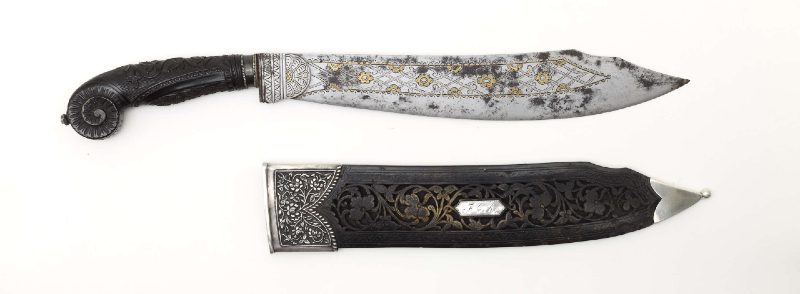
The term bolo refers to a variety of Philippine tools, including machetes, heavy knives, and weapons. During the Japanese occupation of the Philippines from 1942 to 1945, revolutionaries used the bolo as a weapon in their fight for independence.
- Design: long, broad blade, mostly single-edged
- Purpose: Combat, agricultural tool, butchering, woodworking/crafting, ceremonial
South Asia
South Asia is renowned for its diverse array of iconic swords, all celebrated for their fine craftsmanship, intricate decoration, and outstanding metalwork.
India
1. Talwar
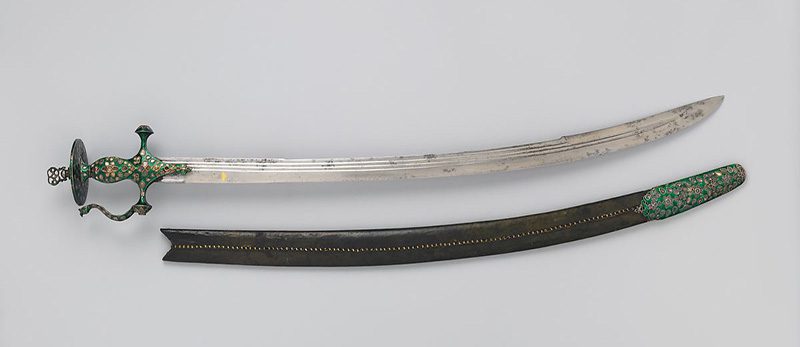
The finest examples of the Indian talwar are often adorned with koftgari work or inlaid decorations of gold or silver. By the late 18th century, the talwar was widely used in Mysore, southern India, during the conflicts between local rulers and the British.
- Design: Wide, curved, single-edged blade, large disc pommel, all metal hilt
- Purpose: Combat, symbol of status/rank, demonstrations, execution, decorative, ceremonial
2. Khanda
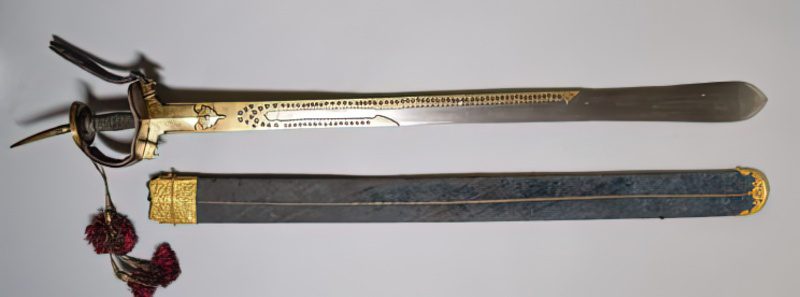
The khanda is one of the oldest Indian swords with a typical Hindu basket hilt, though earlier versions often had the old patissa-style hilt. In Indian culture, the khanda was commonly depicted in religious art as a weapon held by deities, representing wisdom that cuts through ignorance.
- Design: Straight, heavy, broad, double-edged blade with an obtuse tip
- Purpose: Combat, symbol of warriors/authority, ceremonial, execution, decorative
Sri Lanka: Kastane / Kasthane
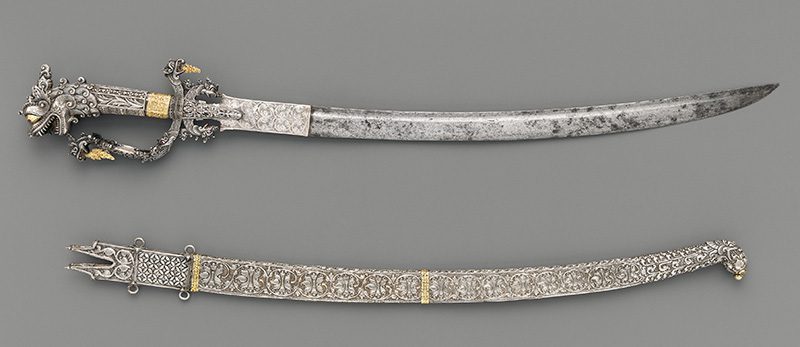
The kastane is the national sword of Sri Lanka, associated with the Sinhalese kingdom of Kandy. Presented by the king to chieftains and noblemen as status symbols or as diplomatic gifts, its hilt features a stylized lion head (simha), the kingdom’s national symbol. The golden-mounted kastane was reserved for the king, while silver versions were worn by high-ranking officials.
- Design: Curved, single-edged blade, ornate hilt and guard
- Purpose: Combat, ceremonial/symbolic, symbol of rank/authority, decorative, diplomatic gift
Afghanistan: Pulwar / Pulouar

The pulwar is an Afghan saber mostly associated with the Pashtuns, distinguished by its domed pommel and short quillons that curve toward the blade.
It incorporates elements from swords of neighboring regions, notably the Persian sabers’ quillons, Indian talwars’ disc-shaped pommel and bulged grip, and blades influenced by Persian, Indian, and Eastern European designs.
- Design: Heavy, curved, single-edged blade with distinctive hilt
- Purpose: Combat, symbol of warrior code, ceremonial, symbol of status, decorative, utility tool
Nepal: Kukri / Khukri / Khukuri
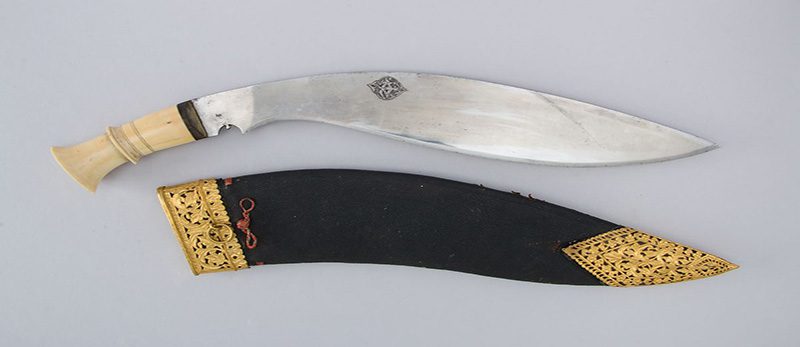
The kukri is mainly associated with the Gurkhas, a Nepalese soldier class with hilts generally made from wood. Higher quality versions used materials such as buffalo horn, bone, and ivory. Others featured iron hilts with silver decorations and Indian koftgari hilts.
Gold-mounted kukris were presented as gifts by the Nepalese royal house to those who had achieved distinction. Another variation, known as the budhune or fat-bellied blade, is mainly associated with the Limbu and Rai communities.
- Design: Short, forward curving blade
- Purpose: Combat, daily and survival utility tool, symbol of Gurkha soldiers, ceremonial, decorative
West Asia
West Asia boasts a variety of curved blades, each reflecting the region’s rich military history and cultural heritage.
Arabian Peninsula: Saif / Sayf
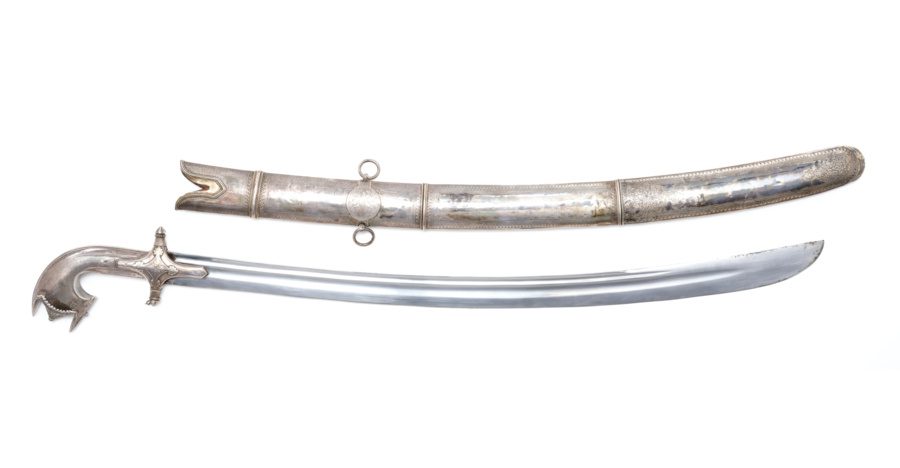
Saif, meaning sword in Arabic, specifically refers to the broad-bladed Arabian saber characterized by a downward-curving grip and Islamic-style crossguard with quillons and langets. Unlike many Islamic swords, it has a moderate curvature and does not taper to a point.
Historical examples can be found in countries where Arabs lived, including India, where Yemeni Arabs were employed as mercenaries by local rulers. As a result, some saif were produced in Hyderabad, likely for the local Arab community and export to Arab nations.
- Design: Typically curved, single-edged blade
- Purpose: Combat, symbol of status/religion, ceremonial, decorative
Iran (Persia): Shamshir
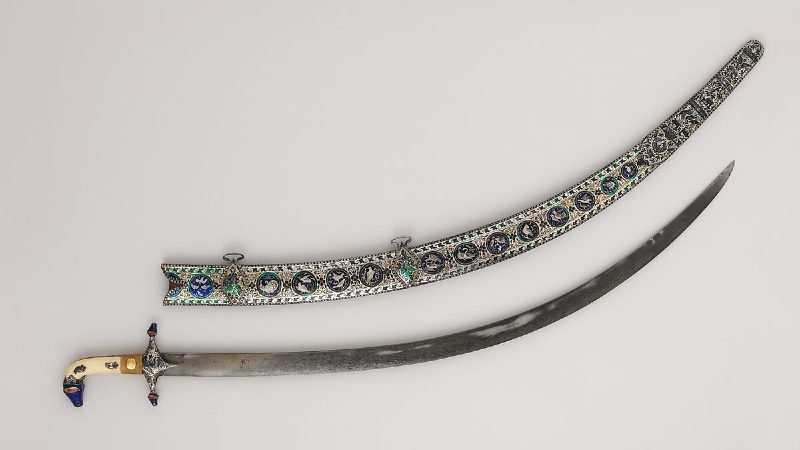
Shamshir, meaning sword in Persian, mostly features a pistol or L-shaped pommel, while others showcase a decorative horse head pommel. Found in India and various regions of the Islamic world, the shamshir was used as a slashing weapon both on horseback and on foot.
- Design: Narrow, deeply curved, single-edged blade with a pointed tip
- Purpose: Combat, symbol of status/religion, ceremonial, decorative
Turkey
1. Kilij
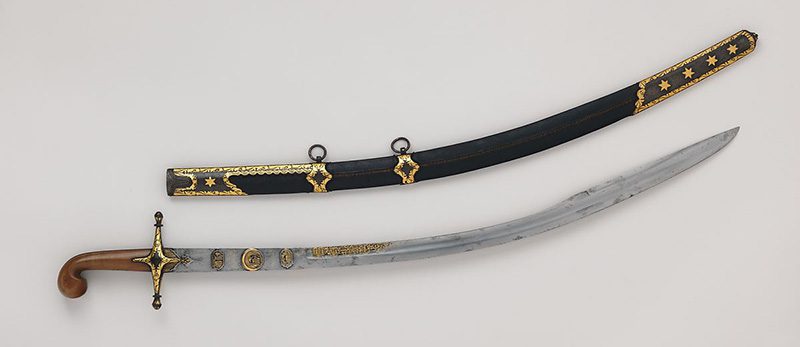
The kilij was the typical Turkish saber widely used during the height of the Ottoman Empire in the 16th century. It has a flared tip (yelman) which increases its slashing power, while its hilt typically features a pistol-shaped design, crafted from materials such as horn, bone, or ivory.
- Design: Distinctively curved, single-edged blade, flared tip
- Purpose: Combat, symbol of status or Ottoman identity, ceremonial, decorative
2. Yataghan / Yatagan
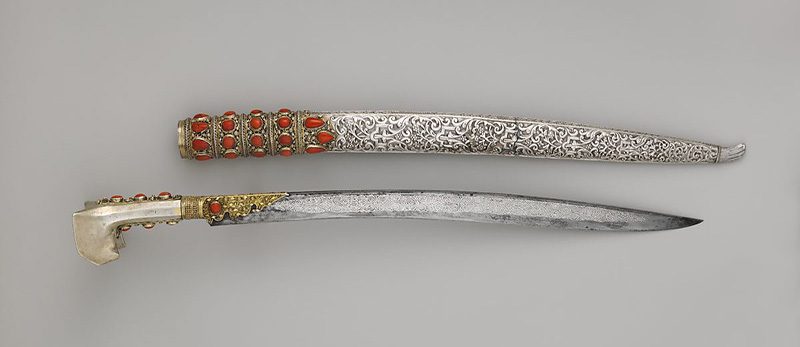
The yataghan was a sidearm used by the Turkish military during the 18th and 19th centuries. Although there is significant variation in its pommel’s form and fittings, it often features flared wings. Swords belonging to Ottoman sultans were often made from luxurious materials and adorned with elaborate decorations, including motifs of a phoenix and a dragon.
- Design: Forward-curving, single-edged blade with a guardless hilt
- Purpose: Combat, symbol of status/religion, ceremonial, decorative

